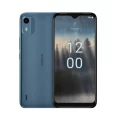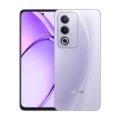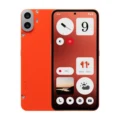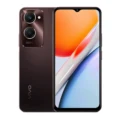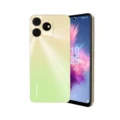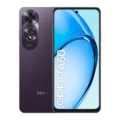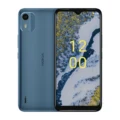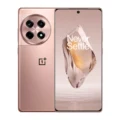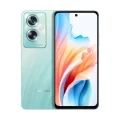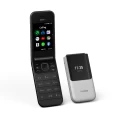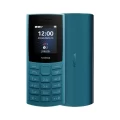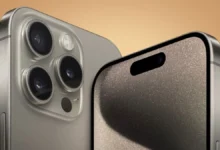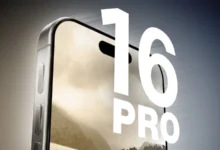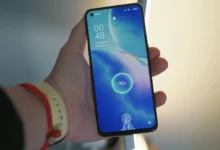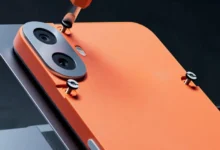Nokia 2780 Flip



-
Display: 2.7 inches (6.86 cm)
-
CPU: Snapdragon 215
-
RAM: 4 GB
-
ROM: 512 MB
-
Camera: 5 MP
-
Battery: 1450 mAh
Specifications
General
| Name | Nokia 2780 Flip |
| Brand | Nokia |
| Model | 2780 Flip |
| Announced | 03 November, 2022 |
| Release Date | 15 November, 2022 |
| Manufacturer Manufacturer Company: A manufacturer is a company engaged in the production of products. | Nokia |
| Made in Made in: Made in is a label or indication on a product that specifies the country where the product was manufactured or produced. | Finland |
Display
| Display Type | TFT |
| Screen Size |
Primary display: 2.7 inches (6.85 cm) Secondary display: 1.77 inches (4.49 cm) |
| Resolution |
Primary display: 320 x 240 QVGA Secondary display: 160 x 128 QQVGA |
| Aspect Ratio | 4:3 ratio |
| Pixel Density Pixel Density: Pixels per inch and pixels per centimetre are measurements of the pixel density of an electronic image device, such as a computer monitor or television display, or image digitizing device such as a camera or image scanner. | 148 ppi |
| Multitouch Multitouch: Smartphone multitouch is a technology that allows the screen to recognize and respond to multiple touch points simultaneously. It enables users to perform gestures like pinch-to-zoom, rotation, and swiping with multiple fingers, enhancing the overall interactivity and usability of the device. | |
| Screen Protection Screen Protection: Display protection refers to the various technologies and materials used to safeguard a smartphone's screen from damage such as scratches, cracks, and impacts. | Yes, protected by a durable plastic covering |
| Screen to Body Ratio Screen-to-body ratio: Percentage of a device's front surface occupied by the display, indicating how efficiently the space is used for the screen. Higher ratios mean more immersive displays. | 35.32% (screen to body ratio) |
Design
| Height |
Closed: 19.5 mm Open: 11.47 mm |
| Width |
Closed: 110.2 mm Open: 202.1 mm |
| Thickness |
Closed: 58 mm Open: 58 mm |
| Weight | 131.2g |
| Material Built Material: The physical construction materials of a smartphone, influence its durability, weight, and aesthetic qualities. Common materials include metal, glass, plastic, ceramic, etc. | Plastic body and frame |
| Colors | Blue and Red |
| Others | Buttons: Keypad, Emergency Button, Volume up/down |
Camera
| Rear Camera | Single |
| Resolution | 5 MP Primary Camera |
| Rear Flash | Yes, Flashlight |
| Image Resolution | 2592 x 1944 Pixels |
| Camera Features | 8x Digital Zoom |
| Video Capture | MP4 |
Battery
| Capacity Battery Capacity: Battery capacity in smartphones refers to the amount of energy a battery can store, typically measured in milliampere-hours (mAh). It indicates how long a battery can power the device before needing a recharge. | 1450 mAh |
| Battery Type | Lithium-ion |
| Removable Removable Battery: A removable battery in a smartphone is a battery that users can easily take out and replace without tools. Removable batteries were more common in older models; modern smartphones favor non-removable batteries for sleeker designs and better water resistance. | |
| Talk Time |
Up to 7.3 hours (2G) | Up to 6.9 hours (3G) | Up to 3.4 hours (4G) |
| Standby Time | Up to 18 days (2G) | Up to 19 days (3G) | Up to 18 days (4G) |
| Fast Charging | Supported (USB Type-C Cable) |
Performance
| Chipset Chipset: In smartphones, the chipset is like the device's brain, controlling everything from processing tasks to managing connectivity. It includes the CPU, GPU, modem, and other components, determining the device's performance and capabilities. Different smartphones use different chipsets made by companies like Qualcomm or MediaTek. | Qualcomm Snapdragon 215 |
| CPU CPU (Central Processing Unit): The CPU, commonly known as the processor, is responsible for processing instructions to perform various functions that enable a device to operate properly. Often described as the brain of computers, smartphones, and tablets, the CPU plays a crucial role in executing tasks and running applications on these devices. Smartphones and tablets rely heavily on their processors to carry out every task, from running apps to managing system operations. Therefore, the processor is an incredibly important factor to consider when selecting any type of computing device, including smartphones. | Quad core, 1.3 GHz, Cortex A53 |
| Architecture Instruction Set Architectures (ISAs): In the context of smartphones, "architecture" refers to the design and structure of the processor, which determines how it processes information and executes instructions. This encompasses the processor's instruction set, memory management, and overall design principles. One common term related to architecture is "64-bit architecture," which has significant implications for performance and capabilities. | 32 bit |
| Fabrication Semiconductor Fabrication: Fabrication in the context of semiconductors and microprocessors refers to the process of manufacturing integrated circuits (ICs) or chips. This involves creating the physical structures of a chip, such as transistors and other electronic components, on a silicon wafer. The term "fabrication" is often used interchangeably with "process node" or "technology node," which indicates the manufacturing technology used to create these chips. | 28 nm |
| GPU GPU (Graphics Processing Unit): The GPU in a smartphone is a specialized processor designed to handle the rendering of images, animations, and video, as well as other tasks involving graphics and visual data. It works alongside the CPU (Central Processing Unit) to deliver a smooth and visually rich experience. | Adreno 308 |
| RAM Random Access Memory (RAM): RAM is a type of computer memory that is used to store data temporarily while a device is in use. RAM is a critical component in smartphones, enabling fast access to data, smooth multitasking, and efficient operation of applications. The amount and type of RAM can significantly impact the performance and user experience of a smartphone. | 4 GB |
| Operating System Operating System (OS): The operating system is the core software that manages all the hardware and software resources on a smartphone. It provides a platform for running applications and controls basic functions such as managing memory, processing tasks, and handling input/output operations. | KaiOS 3.1 |
Storage
| ROM ROM (Read-Only Memory): In the context of smartphones and other electronic devices, ROM typically refers to the built-in storage where the operating system, system files, and pre-installed apps are stored. | 512 MB |
| MicroSD Card MicroSD Card Slot: A microSD card is a small, portable storage device used to expand the storage capacity of electronic devices, including smartphones, tablets, digital cameras, and more. It's inserted into a device's MicroSD card slot to store extra photos, videos, music, and other data. | Yes, microSDHC (dedicated slot) |
| Expandable Storage | Yes, Up to 32GB |
| Others | Phone book supports up to 1,000 contacts |
Network
| Number of SIM | Dual SIM |
| SIM Size | Nano SIM |
| SIM Slot Type | Dual Nano SIM Slots + 1 MicroSD card |
| Network Support | 2G, 3G, 4G |
| Network Speed | LTE Cat 4 - 150Mbps DL/50Mbps UL VoLTE – HD Voice |
| Technology | GSM / HSPA / LTE |
| VoLTE VoLTE (Voice over LTE): VoLTE is a technology that allows voice calls to be made over a 4G LTE network, rather than the traditional 2G or 3G networks. In summary, VoLTE enhances call quality and functionality by using the 4G LTE network for voice communications. | |
| 2G Bands 2G (Second Generation): 2G is a wireless technology standard for mobile telecommunications that was introduced in the 1990s and enabled the transmission of digital voice and data services, using digital transmission instead of analog. It has slower data speeds compared to later generations like 3G and 4G. | GSM 850, 900, 1800, 1900 |
| 3G Bands | UMTS 1900, 2100, 850, 900 MHz |
| 4G Bands |
FD-LTE B2, B4, B5, B7, B12, B13, B17, B25, B26, B66, B71, B41(With HPUE) |
| GPRS GPRS (General Packet Radio Service): General Packet Radio Service is a packet-oriented mobile data standard on 2G and 3G cellular communication networks' global system for mobile communications (GSM). In summary, GPRS is a mobile data service that enhances the data capabilities of 2G and 3G networks, providing basic internet and multimedia services. | |
| EDGE EDGE (Enhanced Data rates for GSM Evolution): Enhanced Data rates for GSM Evolution is a technology used to improve the data transmission rates of 2G GSM networks. In summary, EDGE boosts the data transmission capabilities of 2G networks, providing faster speeds and improved performance for mobile internet access. |
Connectivity
| Wi-Fi Wi-Fi: Wi-Fi is a wireless networking technology that allows electronic devices to connect to a local area network (LAN) wirelessly, typically using the 2.4 gigahertz (GHz) or 5 GHz radio frequency bands. | Yes, Wi-Fi 4 (802.11 b/g/n) |
| Bluetooth | Yes, Bluetooth v4.2 |
| GPS GPS (Global Positioning System): GPS originally Navstar GPS, is a satellite-based radio navigation system. It is a satellite-based radio navigation system, GPS permits users to determine their position, velocity, and the time 24 hours a day, in all weather, anywhere in the world, In order to locate your position, your device or GPS receiver must have a clear view of the sky. | Yes with A-GPS |
| OTG OTG (On-The-Go): The full form of OTG is On-The-Go . OTG is a USB (Universal Serial Bus) standard that allows USB devices to be connected. Without using a computer connection, USB OTG items can connect. You can connect your mobile phone or tablet to various gadgets using a USB OTG link. | Supported |
| Browser Browser: A browser is a software application used to access and view information on the World Wide Web. It allows users to navigate through websites, view web pages, and interact with various online content such as text, images, videos, and other multimedia resources. | Available |
| USB Interface | USB Type-C 2.0 Cable |
Sensors
| Games | Available |
| Other Facilities | Calculator, Stopwatch, Calendar, Alarm |
| Other Sensors | Hall sensor |
Multimedia
| FM Radio | |
| Loudspeaker | Yes |
| Earphone Jack | 3.5 mm |
| Voice Recorder | Available |
| Video Playback | MP4, 3GP, AVI, and MKV |
| Audio Playback | AAC, AMR, MP3, MIDI, Vorbis |
| Ringtone Formats | MP3 music ringtones, Vibration |
| Video Formats | MP4 (video recording) |
| Image Formats | JPEG, PNG, GIF |
The Nokia 2780 Flip is a simple and easy-to-use flip phone that is perfect for people who are looking for a basic phone with long battery life. It has a 2.7-inch display, a 5MP camera, and a long-lasting 1450mAh battery that can provide up to 18 days of standby time. The Nokia 2780 Flip also has a number of accessibility features, including bigger buttons, hearing aid compatibility, and real-time text (RTT).
Pros and Cons
Here are some of the pros and cons of the Nokia 2780 Flip:
Pros
- Simple and easy to use
- Long battery life
- Accessibility features
- Affordable price
Cons
- Basic features
- Small display
- Low-resolution camera
- No 5G network support
Verdict
If you are looking for a simple and easy-to-use flip phone with long battery life, the Nokia 2780 Flip is a great option. It is perfect for people who are looking for a basic phone that can do the basics, such as making calls, sending text messages, and browsing the internet.
Reviews
Disclaimer Note
The information on this page may not be entirely accurate or up-to-date. Product prices are approximate and may vary based on taxes, import duties, and other factors.

